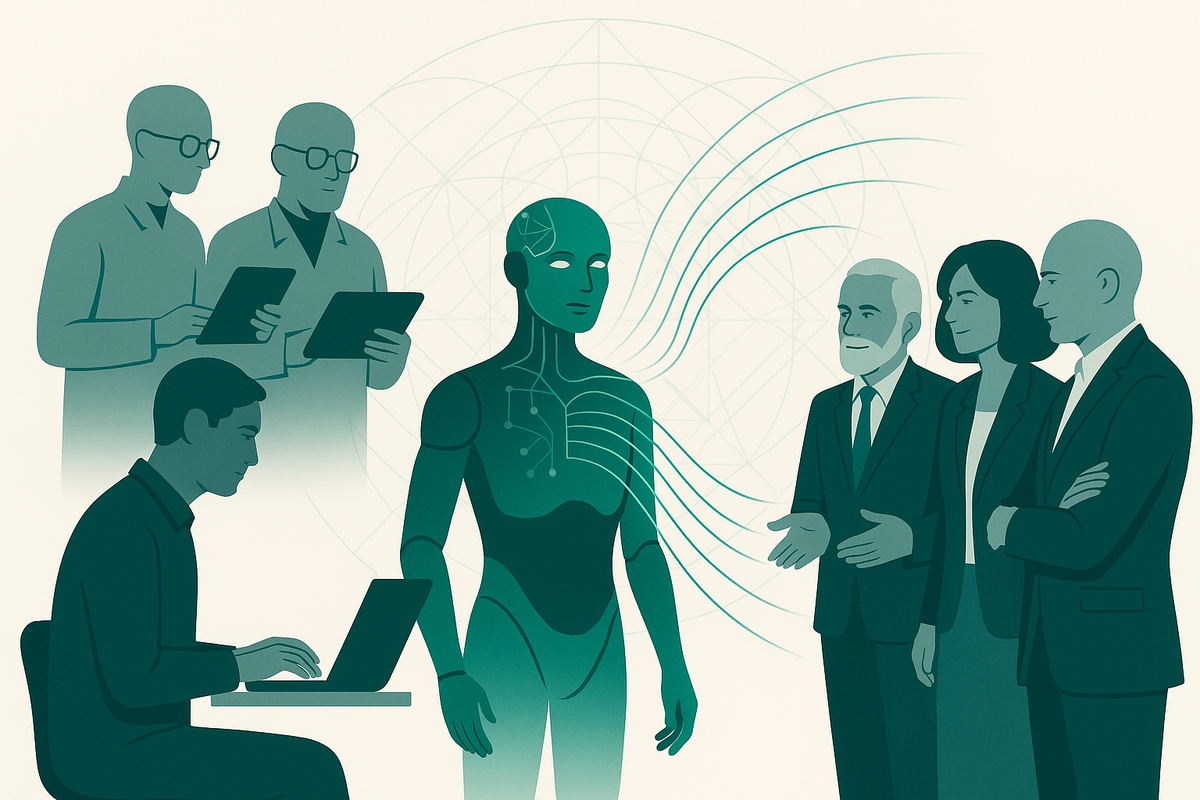AI-First Shouldn’t Mean Human-Last

Why Putting People At the Centre Is the Real Key to AI Success
The phrase “AI-first” is everywhere—from corporate roadmaps to investor decks—but behind the buzz lies a growing concern: in the race to adopt artificial intelligence, are we sidelining the very people it's meant to empower?
While AI promises incredible gains in productivity, insight, and innovation, its current trajectory often reflects a troubling assumption: that progress requires minimizing human input. This mindset isn't just misguided—it’s counterproductive. A truly AI-first future isn’t one where humans are replaced; it’s one where they are augmented, supported, and empowered.
This article explores the risks behind the “automation at all costs” mentality and makes the case for a more human-centered approach to AI adoption.
1. “AI-First” Is Quietly Becoming “Automate Everything”
At its best, AI can be a powerful co-pilot—expanding creative potential, surfacing insights, and making complex tasks easier. But too often, “AI-first” strategies prioritize cost-cutting and automation above all else. AI is treated like a scalpel to slice away human labor, rather than a lens to help us see better.
This approach is short-sighted. It ignores the strategic, emotional, and social roles people play in successful innovation. It treats intelligence as code, not context. And it drives AI systems that are optimized for efficiency, but brittle in real-world complexity.
2. The New Competitive Advantage: Humans Who Think Critically with AI
In a world of AI-generated everything, the true differentiator isn’t more content, more output, or more automation. It’s better judgment.
What separates high-performing organizations isn’t how fast they adopted ChatGPT—it’s how well their people learned to collaborate with it. Human-centered AI adoption builds fluency in decision-making, creativity, and nuanced problem-solving. It turns AI into a force-multiplier for your team, not a threat to their roles.
Companies that succeed will be those that invest in cultivating this relationship—not eliminating it.
3. Redefining 'Productivity': It's Not About Doing More, It’s About Doing the Right Work
Silicon Valley’s obsession with revenue-per-employee metrics and lean staffing models is pushing AI adoption down a dangerous path. When every hire must justify their existence against a machine, innovation suffers. So does morale.
The irony? The most strategic uses of AI often require more human thinking, not less. When used well, AI unlocks time and energy for higher-order work: designing better systems, mentoring teams, refining brand narratives, and imagining the future.
Those aren’t automatable tasks. They’re human ones. And they’re what actually move organizations forward.
4. AI Success Stories Have One Thing in Common: Human Leadership
From healthcare to education to business strategy, the most successful AI implementations share a pattern: they’re led by people, not systems.
When humans are involved in designing, shaping, and adjusting AI tools to fit real needs, adoption soars. When they’re excluded—when tools are dropped in from above or taught in rigid, engineering-heavy formats—usage collapses.
This is especially true for non-technical professionals, senior leaders, and creative teams. These groups aren’t “behind”—they’re underserved by a system that assumes everyone wants to think like an engineer.
5. The Real Risk Isn’t AI. It’s Losing Our Ability to Learn, Adapt, and Lead.
The most dangerous consequence of removing humans from the AI equation isn’t job loss—it’s capacity loss. When we prioritize automation over augmentation, we undercut our ability to develop the very skills we’ll need in a future shaped by AI.
We need to teach professionals how to think with AI, not compete with it. We need to design tools that meet people where they are—not force them into rigid workflows that strip away agency and creativity.
AI That Leaves Humans Behind Will Fail. So Will the Companies That Use It.
The data is clear: most AI implementations fail. Not because the tech doesn’t work, but because the people expected to use it aren’t supported. They’re overwhelmed, excluded, or forced into unnatural ways of working.
The solution isn’t better engineering. It’s better relationships—with ourselves, with our tools, and with each other.
AI-first shouldn’t mean human-last. In fact, the only path to sustainable AI success is one where humans come first, last, and always.